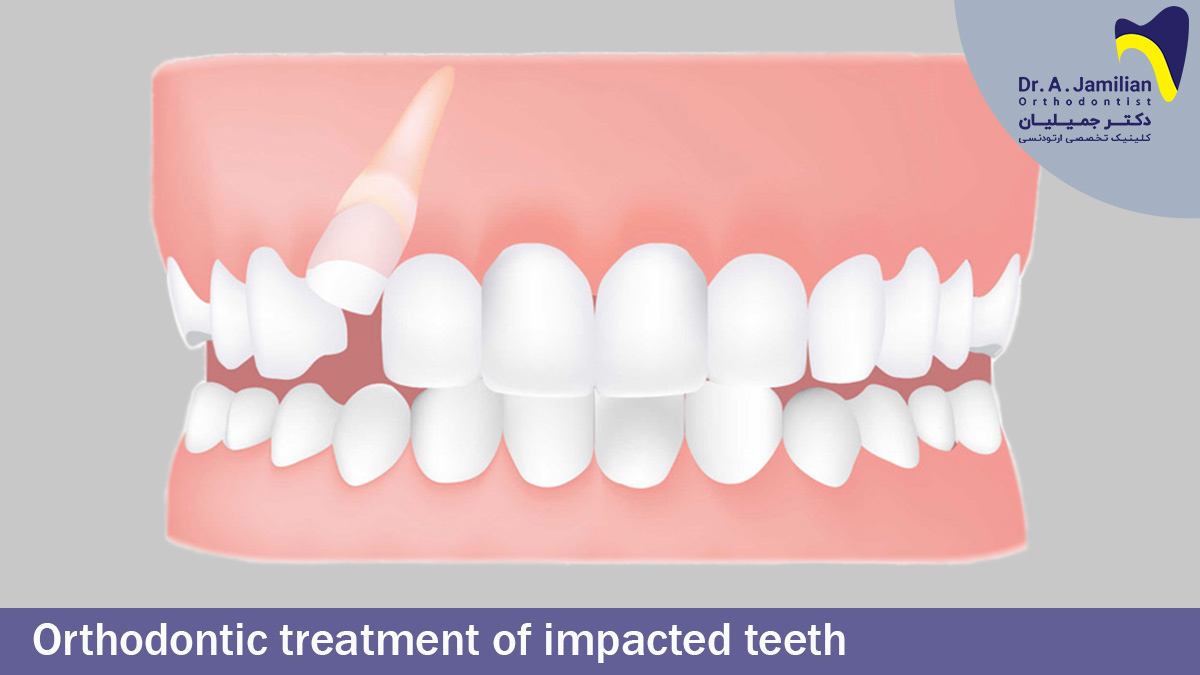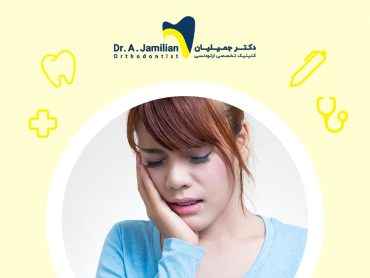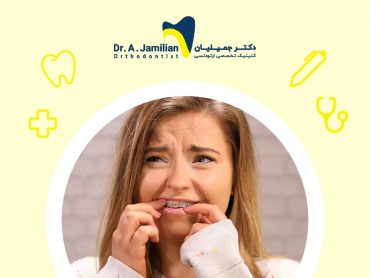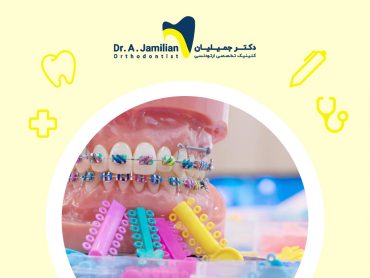Canines are more likely to be impacted than other teeth of a mature human. There are several causes for impacted canines, the most prevalent of which is insufficient space for the eruption and growth of canines. Orthodontics is among the best treatments for impacted canines. The first and most essential step to the complete treatment of an impacted tooth is the timely diagnosis of this condition. In some cases, it is necessary to extract an impacted milk canine to provide enough space and appropriate conditions for the correct vertical (not horizontal or tilted) eruption and growth of the permanent canine.

An impacted canine
When milk teeth fall out it’s time to replace them with permanent teeth. This most commonly occurs by 11 or 12 years old. Canines are often among the last teeth that begin to erupt, especially on the maxilla. In some cases, especially in those with large teeth and small jaws, other teeth may occupy all oral cavity spaces and leave no space for the canines’ eruption.
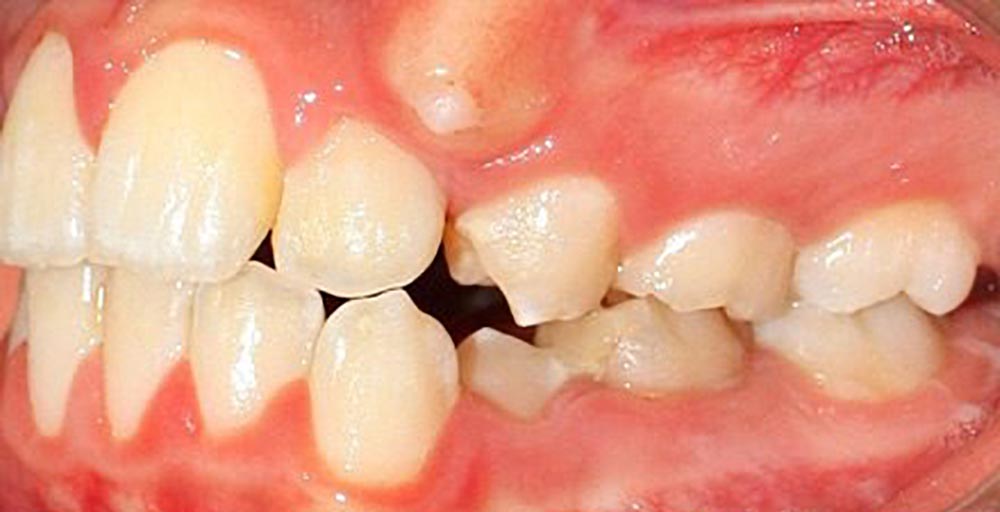
When previous teeth occupy all the space, there will be no more space for the canine tooth’s eruption, leading to creating an impacted canine. Patients with impacted canine radiographs show that the canine is located in the area under the nose and sometimes under the eyes. What can we do for such patients? It is possible to take advantage of orthodontic treatments to enlarge and widen the maxilla to place the impacted canine in its correct position on the dental arch.
Orthodontic treatment of impacted teeth
Orthodontic archwires are used for the treatment of such cases. The archwires are attached to teeth to widen the maxilla to provide enough space for the impacted canine. A maxillofacial surgeon will then remove the gums to expose the impacted canine under the nose and gently place it in its correct position using a special elastic band. This procedure is also used for the placement of impacted canines on the maxilla.
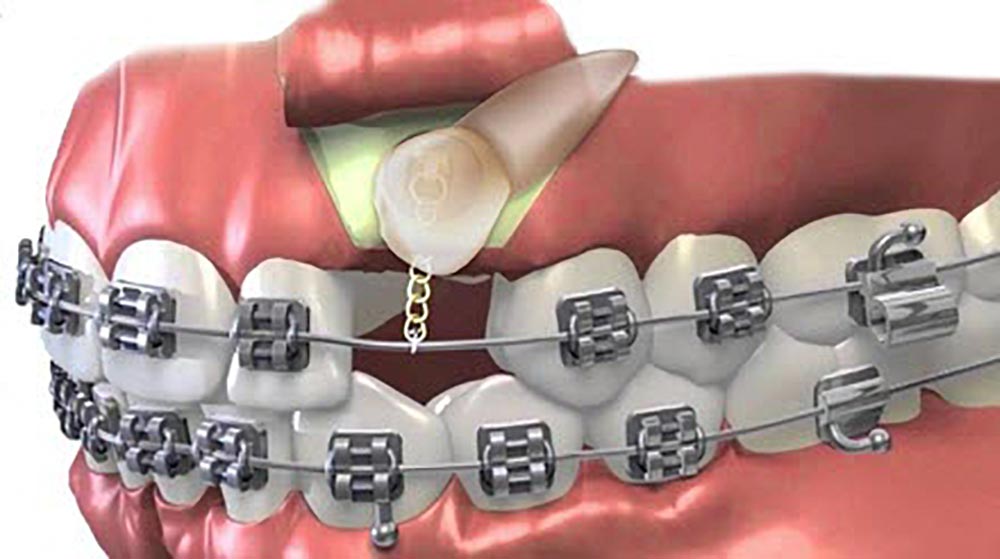
The position of an impacted teeth
Vertical or inclined teeth are easier to place and fit in their proper position on the jaw, whereas it is very difficult to do so for the teeth with a horizontal position. However, such patients are recommended not to do so because it may loosen their adjacent teeth. Instead, it is better to advise such patients to extract such teeth. Therefore, it is not correct to decide to extract any impacted tooth, and some vertical or inclined impacted teeth can be placed in their correct position on the dental arch.
All four canines may be impacted in some patients, whereas others may have one or two impacted canines on the maxilla. Other teeth, e.g., the 2nd bicuspid (No. 4) and the 1st bicuspid (No. 5), may also be impacted. When the order of teeth eruption is disrupted, other teeth are also likely to be impacted. In general, all impacted teeth can be treated using orthodontic archwires and orthodontic elastics to provide enough space for placing them in their correct positions.
